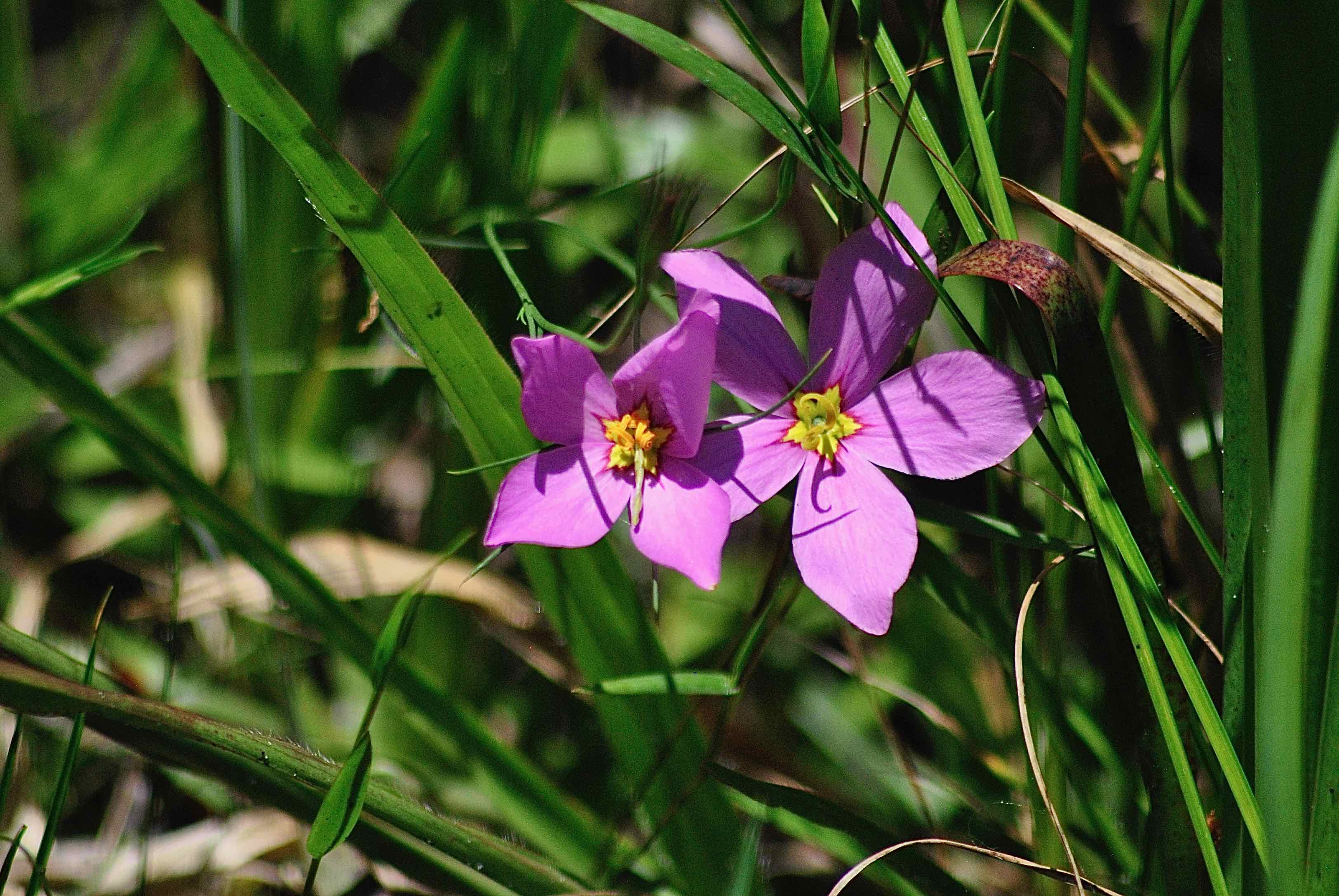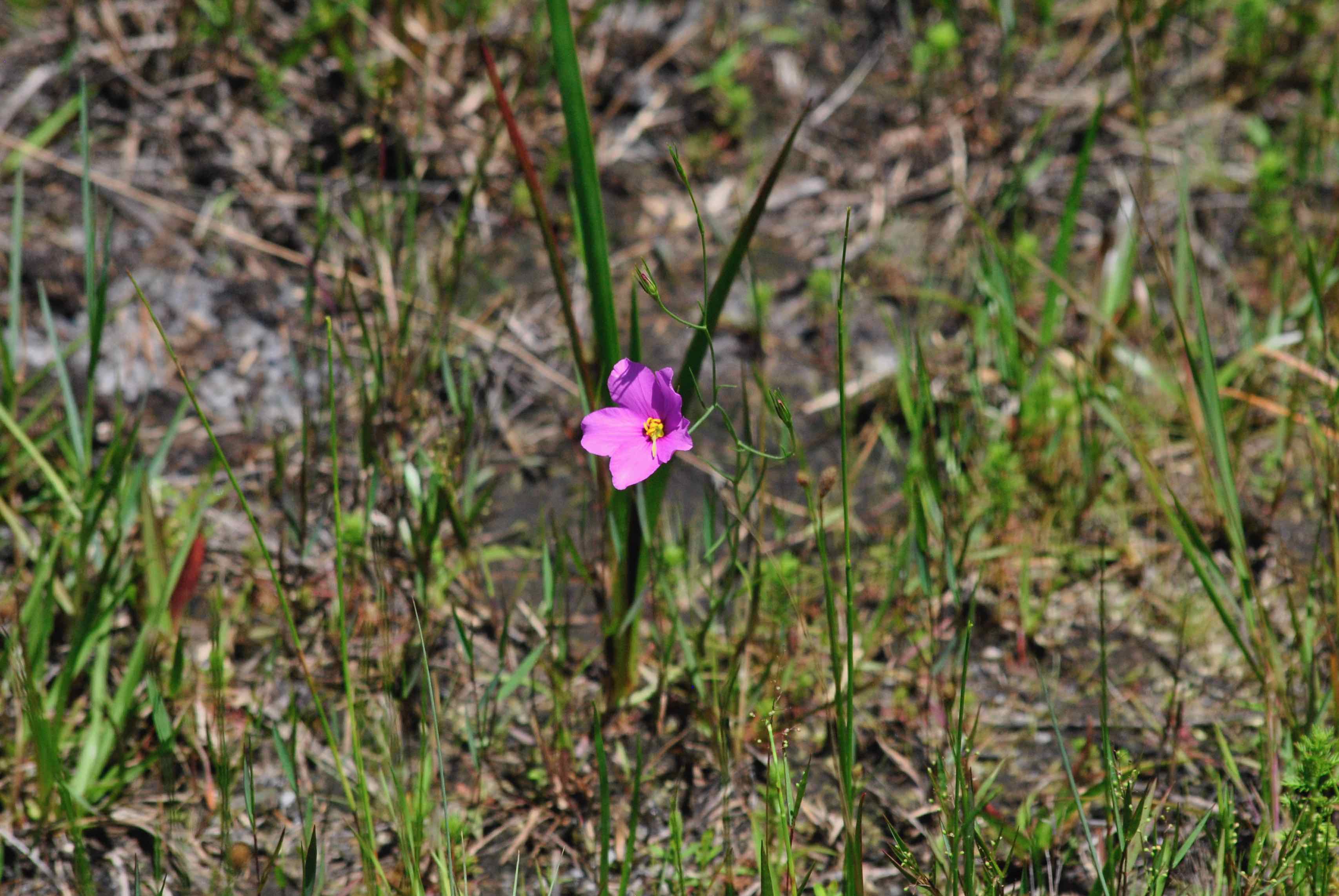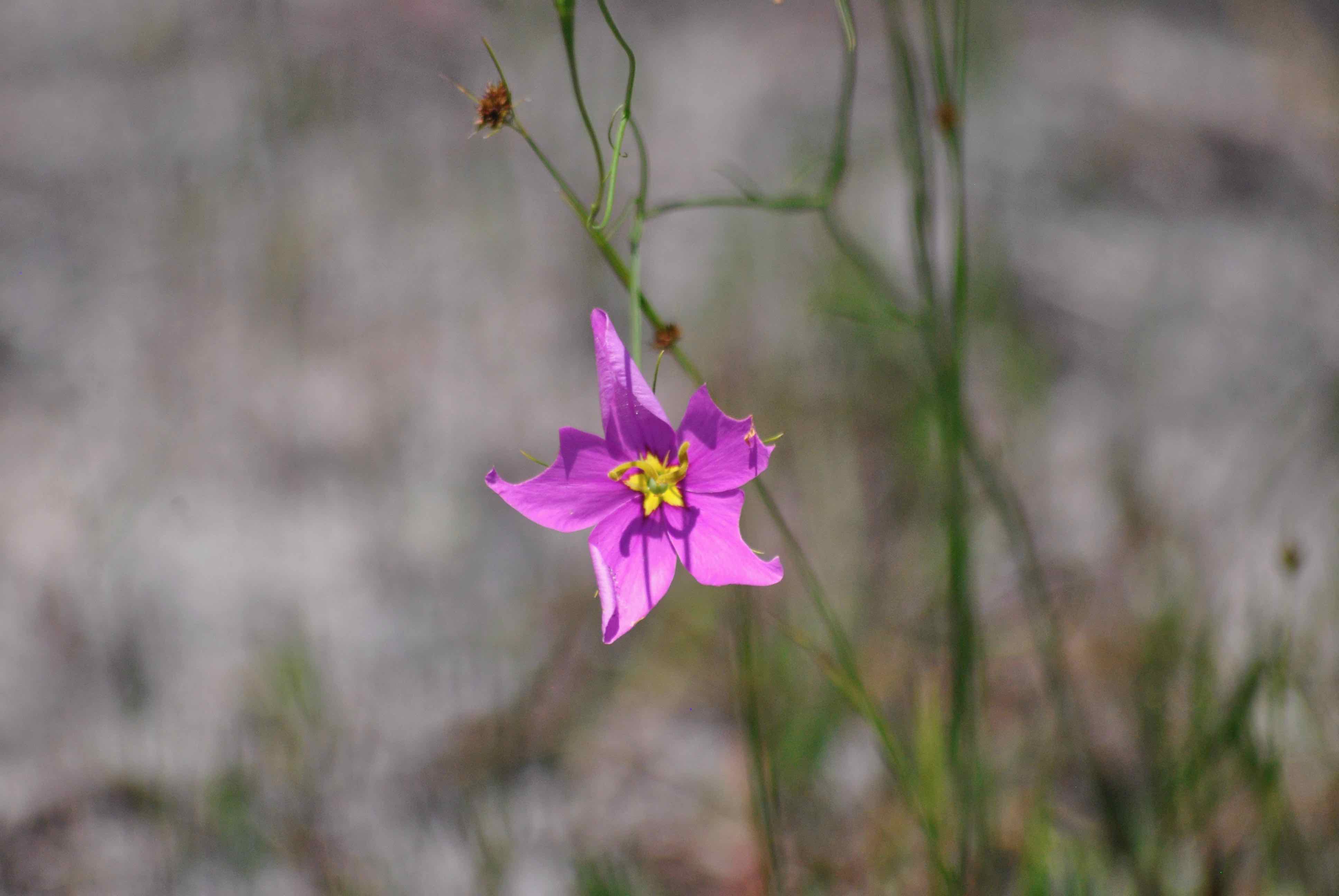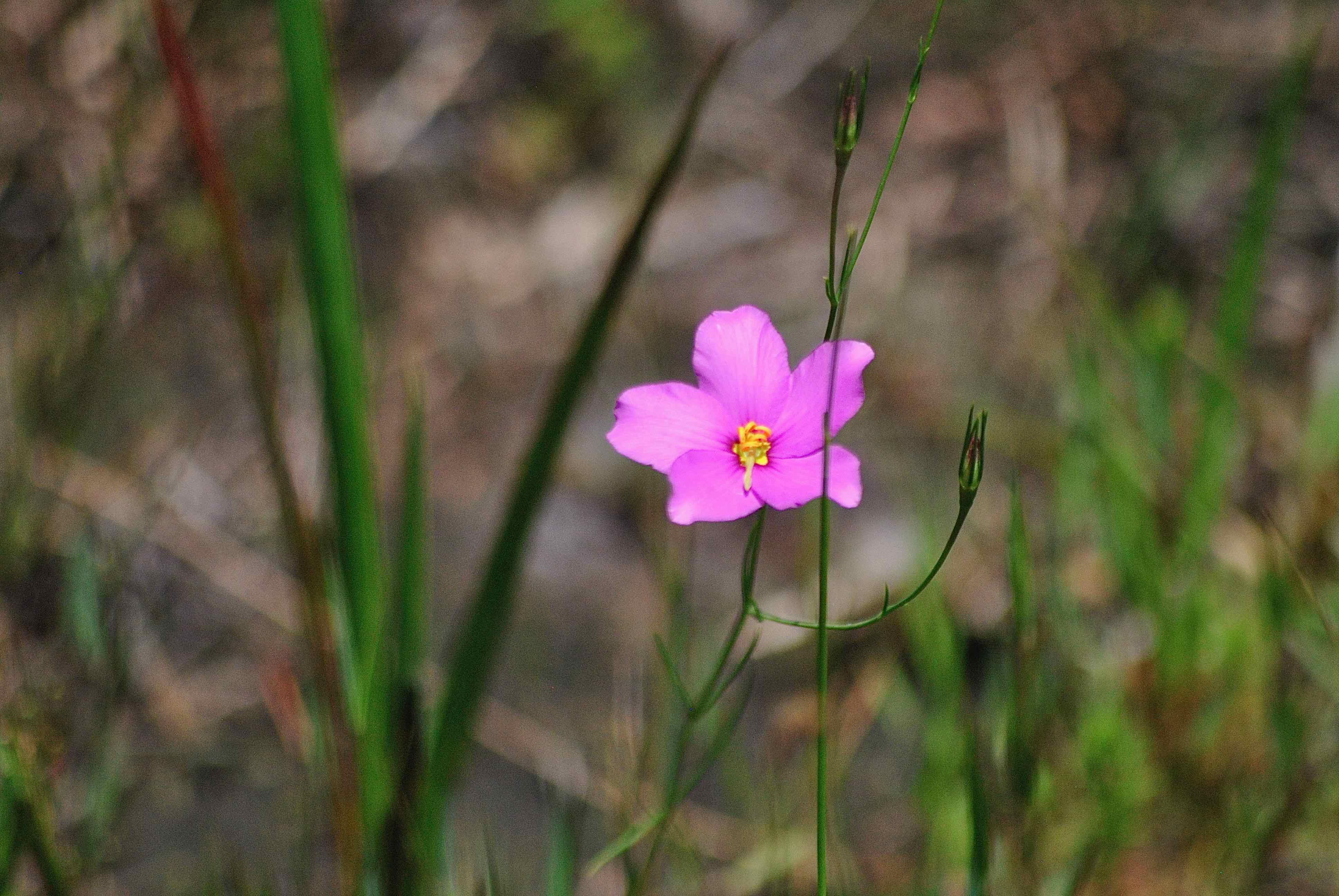
Large-flowered pink marsh, photographed at Atlantic Ridge Preserve State Park, Stuart, Martin County, in May 2014.
Encountering large-flowered pink marsh, Sabatia grandiflora, for the first time is something of a revelation. It has to rank among the most spectacular wildflowers in Florida. Or anywhere else, for that matter.
It is a moisture-loving plant, sparsely leafed, found along the boggy edges of marshes, in wet prairies and wet flatwoods. It is an annual, flowering in spring and summer in northern places where it's found, all year in the southern part of its range. We first spotted pink marsh while exploring John Prince Park and Okeeheelee Nature Center one May some years ago, and it instantly became one of our favorites.
The blooms can vary from purple, to deep pink to pale pink and even, rarely, white. They and have a star-like pattern inside with a red border, seen in the photo above. The real tell on large-flowered pink marsh are the twisted, yellow stigma, also seen best in the photo to the left. The flowers can be as large as two inches across, living up to the plant's scientific name, grandiflora.
Large-flowered pink marsh can get quite tall, depending on the source you read, as much as two to three feet. The stem is sparsely leafed; lower leaves are on the short side and narrow, about an inch-and-a-half by a quarter of an inch. Flowers occur on the main stem at the top of the plant, and on side stems. The blooms last for days, and the plant produces blooms for weeks into summer.
Its natural range in the United States is limited to Florida and one county in Alabama, according to the U.S. Department of Agriculture's PLANTS database. Some sources also put it in Georgia. Within Florida, it's found in most of the Panhandle, almost all of the Peninsula and as far south as Key West. Large-flowered pink marsh is also found in Cuba.
The Institute for Regional Conservation of Delray Beach considers large-flowered pink marsh to be rare in South Florida, but it is not legally protected by any government agency. It's considered critically imperiled in Alabama and Georgia but apparently does not have legal status as a protected species in either state.
It is not known to be grown commercially but it can be cultivated, easily grown from seed under the right conditions — moist soil and full sun. Experts say that while large-flowered pink marsh is easy to grow, it's difficult to maintain in the landscape because of its need for moisture. The plant puts out plenty of seed, but collecting it might be tricky, because more than likely you'll find large-flowered marsh pink in a park or a preserve where such activities are frowned upon. Put plainly, it's illegal.
According to noted Florida naturalist Roger Hammer, the Seminoles used large-flowered marsh pink to treat "sun sickness." In his book, Central Florida Wildflowers, Hammer said the Seminoles also used it as a quinine substitute to make a bitter tonic.
It is a member of the Gentianaceae, or gentian family, which is known for putting out beautiful flowers. Alternative common names include marsh pink, largeflower rosegentian, rose gentian and largeflower rose gentian.



